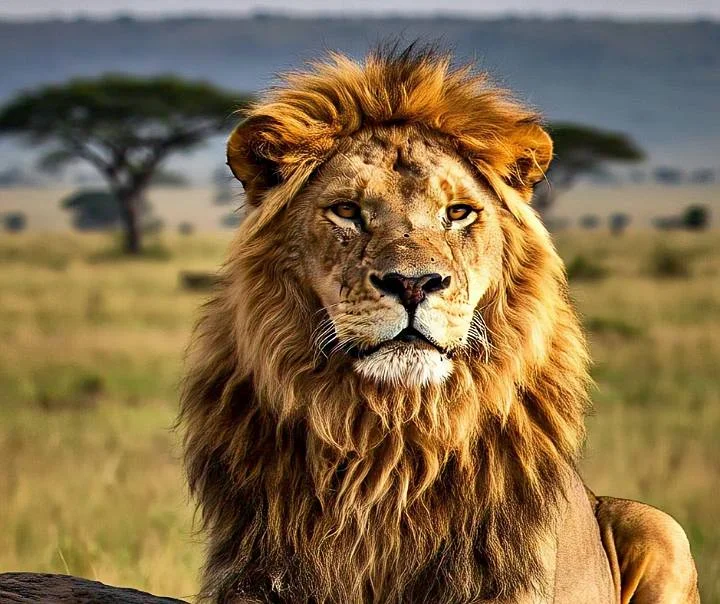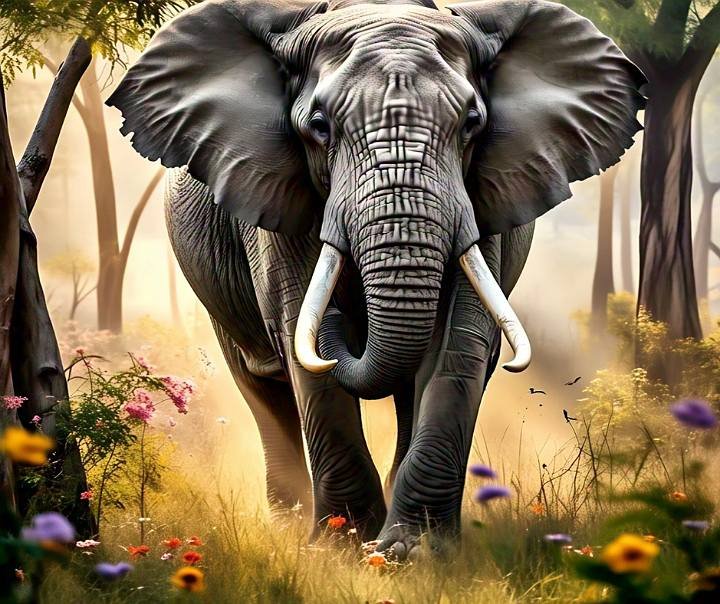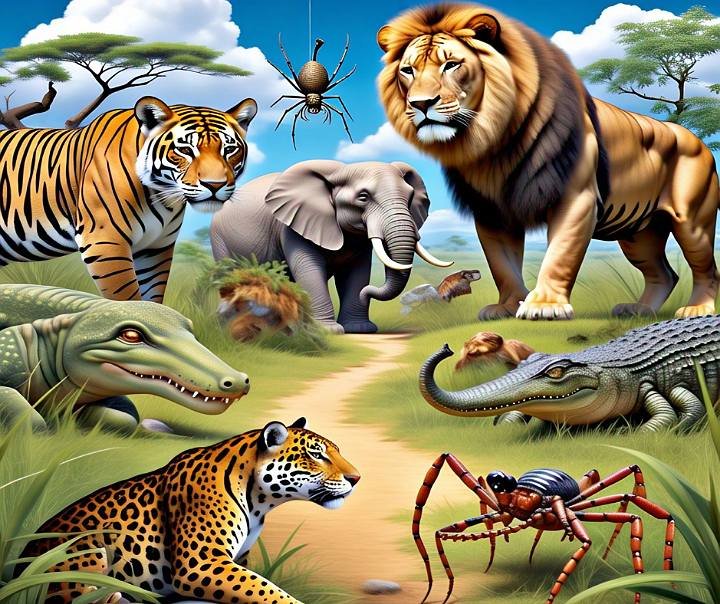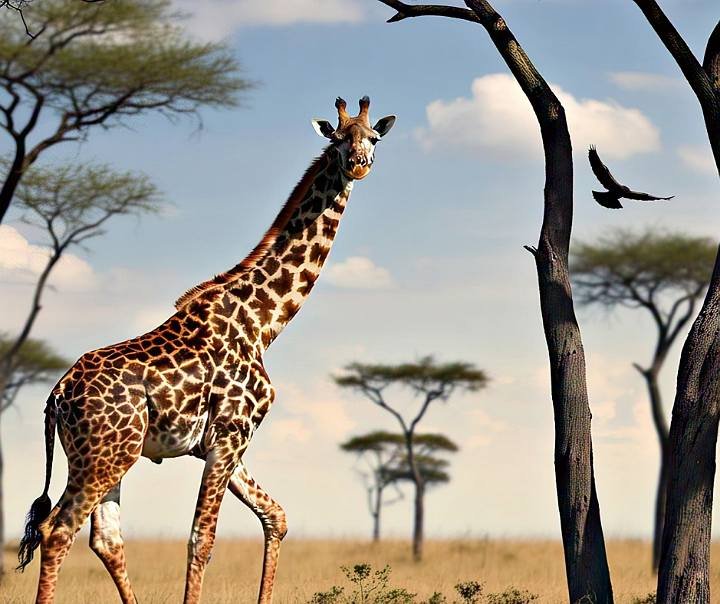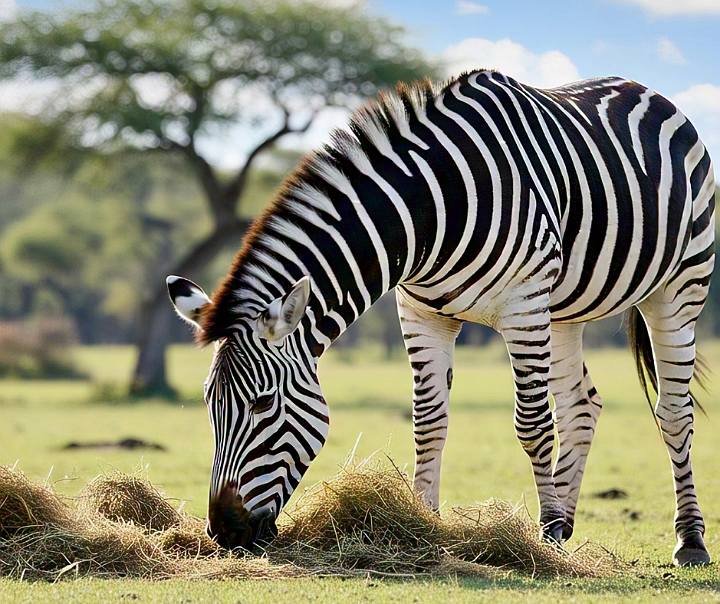Chimpanzee Facts – Complete Guide to Habitat, Behavior, Diet, Subspecies and Conservation Efforts
Hey folks! I’m your Jungle Jhaadi guide, Amit. These days, everyone’s stuck in the city’s hustle and bustle, right? But sometimes, don’t you miss that lush, green jungle world? Hearing stories about the animals there just calms the soul. Today, I’m taking you deep into the dense forests of Africa, where our cheeky pal lives – the chimpanzee. Yeah, the same one you see in cartoons on TV, but in real life, these guys are so smart and complex, they’ll blow your mind.
I’ve seen chimpanzees up close myself – once on a safari in Kenya, and there was this group swinging and jumping on the trees, causing total chaos. Their screams, their playfulness… it felt like kids messing around in school.
But friends, once you dive into all about chimpanzees, you’ll think, “Hey, these are our closest relatives!” Come on, let’s step into their world bit by bit. I’ll tell you everything – from their home to food, social life, and even the dangers. And yeah, if you’re searching for chimpanzee characteristics or chimpanzee behavior, this post is just for you. Let’s get started!
Chimpanzee (Infobox)
Category | Information |
|---|---|
Scientific Name | Pan troglodytes |
Classification | Great Ape |
Habitat | Central and West African Rainforests and Savannas |
Diet | Omnivore – primarily fruits, leaves, and small animals |
Weight | Males – 40 to 70 kg, Females – 27 to 50 kg |
Height | Approx. 1.2 to 1.5 meters (when standing) |
Lifespan | Up to 40 years in the wild |
Intelligence | High, Capable of tool use (making and using sticks, stones, etc.) |
Social Structure | Complex Fission-Fusion societies |
Human DNA Similarity | Approximately 98% |
Conservation Status | Endangered |
Who Are Chimpanzee?
Hey buddy, first things first, let’s clear up what a chimpanzee is. Chimpanzees are primates, you know, part of the ape family. Their scientific name is Pan troglodytes, which sounds a bit fancy, but it basically means “cave-dweller” – king of the jungle. They’re native to the African continent, especially the equatorial forests where sunlight filters through like magic.
Now think, who’s our closest relative? Yep, chimpanzee and human connection is so deep that their DNA matches ours by 98-99%! Scientists say our common ancestor roamed around 6-7 million years ago. So, we both branched off from the same tree. Hearing chimpanzee facts just spins your head – these aren’t just animals; they run a whole society. Their numbers are dropping in the wild, but you can still find thousands roaming in parts of Africa.

Whenever I read chimpanzee information, it feels like they’re our siblings. If you’re a wildlife freak, know this: Chimpanzees are divided into four subspecies – Central, Eastern, Western, and Nigerian. Each has its own vibe, but all share that mischievous charm. I read in a Britannica report that they live 40-50 years, and the bigger the group, the stronger the community. Check out Britannica Chimpanzee Overview – they’ve got photos and maps showing their range. Alright, let’s move on to their home.
Chimpanzee Subspecies
Buddy, now let’s talk about chimpanzee subspecies, which are actually four distinct ones. Each has its own turf, style, and challenges. All four are endangered according to IUCN, meaning they’re in trouble. I just read that 2025 studies are focusing on their genetic adaptations, showing how they’ve tweaked themselves to local environments. Let’s break them down one by one:
- Central Chimpanzee (Pan troglodytes troglodytes): These are the most common, living in the dense rainforests of the Congo Basin. Highest numbers, but habitat loss is hitting them hard. Their bodies are a bit stockier, perfect for thick jungle life.
- Eastern Chimpanzee (Pan troglodytes schweinfurthii): Found in East Africa spots like Uganda and Tanzania. Jane Goodall’s studies were on these. They use tools more, and their groups even wage “wars.” But population’s low, around 250,000.
- Western Chimpanzee (Pan troglodytes verus): In West Africa, like Ghana and Liberia. Lightest fur color, and in the most danger – critically endangered. Bushmeat trade has wiped out tons.
- Nigeria-Cameroon Chimpanzee (Pan troglodytes ellioti): In northwest Africa border areas, like Nigeria and Cameroon. Rarest, only 4,000-6,000 left. Unique genetics, but fragmented habitats make it tough.
Each subspecies has its own culture – tool use, social setups. A big 2025 genetic study showed they’re adapted to local infections and habitats. If you’re after chimpanzee subspecies details, hit up IUCN Chimpanzee Subspecies. Knowing this is key ’cause conservation plans need to be tailored.
Fun Facts About Chimpanzee
Man, there’s so much about chimpanzees that you could write a whole book, but I’ve rounded up the coolest and most surprising fun facts about chimpanzees. Read these points, and you’ll think they’re superheroes! Let’s bullet ’em out:
- DNA Magic: Humans and chimpanzees share 98% DNA, making us closer than gorillas. Imagine, same ancestors!
- Tool Masters: Chimpanzees are among the smartest tool-users – sticks for termites, leaves as sponges. It’s like engineering class!
- Self-Awareness: They recognize themselves in mirrors, proof of self-awareness. They know “who I am”!
- Social Networks: Their groups are as complex as human societies – hierarchies, alliances, even “wars”!
- Their Own Language: Over 60 gestures and calls form a “language” for group messaging. They communicate in silent mode too!
- Problem-Solvers: They solve puzzles and plan, like strategizing hunts. Confirmed in 2025 studies!
- Emotional Faces: Their faces show emotions clearly – smiles for joy, screams for anger. Just like us!
- Long Life and Care: They live over 50 years and care for kids for years, the best family bonding example.
- Endangered Status: Sadly, endangered from habitat loss and hunting. But 2025 World Chimpanzee Day is boosting awareness.
- Intelligent Brains: Their cognitive skills are so advanced, researchers call ’em the “smartest non-human.” Closer than gorillas!
Reading these facts, doesn’t it feel like chimpanzees aren’t just animals, but jungle superstars? If you’re searching fun facts about chimpanzees, save these points!
Chimpanzee Home – The Story of Africa’s Forests
Dude, chimpanzee habitat pops into your head those thick, green forests, right? Spot on! Chimpanzees mainly live in the rainforests of central and west Africa, where rain falls year-round. From Congo Basin to Cameroon, Ghana, Uganda, Tanzania – their range is so vast, a map would spin your brain. These forests are so dense, sunlight barely hits the ground, and the air’s always humid.
But hey, natural habitat of chimpanzees isn’t just jungle; it includes rivers, grasslands, hilly areas, and even open plains sometimes. Why? ‘Cause they’re omnivores, needing variety for food. A fresh WWF report says these forests get over 2000 mm of rain yearly, so fruits never run short. Click WWF Chimpanzee Habitat – satellite images show how forests are shrinking.
I’ve heard a chimp group roams up to 50 km areas. They walk 5-10 km daily, climbing trees, crossing rivers. At night, they build nests – fresh leaves like a bed. But sadly, chimpanzee habitat destruction is speeding up. Logging companies chop trees, mining clears land, agriculture razes jungles. A UN study says 80% forests gone since 1900. If we don’t wake up, chimpanzee threats will rise. But hope’s there – conservation projects can stop it. If you’re searching chimpanzee home in Africa, these details fit perfect.
Chimpanzee’s Physical Build
Now onto the body talk, man. Physical characteristics of chimpanzees make you think nature custom-designed ’em for the jungle. Look like us – black thick fur, pink or black face, and those long arms longer than legs. Adult weighs 40-60 kg, height 1-1.7 m. Males bulkier, females slimmer.
Coolest part? Hands and feet. Structure of chimpanzee limbs lets ’em climb trees like kids’ play. Opposable thumbs for gripping branches. Long, strong fingers for picking fruits or holding sticks. Teeth like hammers – for munching fruits or cracking bones. Eyes forward-set for depth perception, no misses on hunts or fruits.
Skin-wise, face, ears, soles bare; rest fur jungle. Newborns have white fur like mini Santas, turns black later. National Geographic story said their muscles are 1.5x stronger than ours – one chimp lifts 500 kg! Check National Geographic Chimpanzee Anatomy – animated models there.
I think, put a chimp in the gym, they’d shatter weightlifting records. But seriously, this build’s for jungle survival – fast runs, high jumps, quick escapes. Physical build of chimpanzees shows nature’s smarts.
Chimpanzee Behavior
Man, chimpanzee behavior is a topic that never ends. They don’t roam alone; big groups. Community 15-150 members, core family 20-30. Males lifelong in group, females shift sometimes – like marriage migration.
Amazing? Chimpanzee tool use! Sticks for termites, leaves as sponges for water. Jane Goodall discovered in Gombe 1960s, shook biology world. Hunting? Epic – group chases small monkeys, signals, catches.
Social structure? Chimpanzee social structure on hierarchy. Alpha male leads, picked by fights – punches or screams. Females no less, pros at raising kids, holding group. Grooming’s fave – cleaning fur, sharing gossip. Docs show border patrols, wars with other groups. Human-like!
Social behavior of chimpanzees so complex, scientists still study. Show emotions – dance for joy, scream in anger. Watch videos on Jane Goodall Institute Behavior – fun! If searching chimpanzee behavior, these facts help.
Chimpanzee Food
Hey, now belly talk! Chimpanzee food feels like a jungle food fest. Mainly fruits – 60% diet. Bananas, figs, mangoes, wild berries – whatever on trees, pluck and munch. Up at dawn for fruit hunt, gather heaps all day. But dude, not just fruits; omnivores, ready for anything. Chew leaves, crack seeds, veggie-like stuff.
Then bugs part. Termites fave snack! Stick in mound, suck ’em out. Ants, grasshoppers, larvae – catch and eat. Good protein. Saw doc: group attacks termite hill, jumping, twirling sticks – party time!
And yeah, meat cravings sometimes. Hunt small animals – monkeys, baby deer, birds. Group surround, signal, catch – share all. Jane Goodall reports: for protein, but not much, once-twice weekly. Sharing learned – alpha first, then rest. See Jane Goodall Chimp Diet – videos of food sharing.
They spend 6-8 hours daily foraging. Water from rivers or falls, or leaf-sponge. Habits change with seasons – fruit party in rains, bugs-leaves in dry. Fun bit: share food to strengthen bonds. No one hungry. We humans sometimes stingy with plates, but these jungle true friends. Chimpanzee eating habits show nature’s smarts. Searching chimpanzee diet? These details help.
Chimpanzee Reproduction and Family
Bro, now family story. Chimpanzee reproduction cycle like mini human family life. Females ready at 13 for babies, males bit later, 15-16. No fixed mating season, but mostly fruit time for energy. Pregnancy 8 months, one baby birth – twins rare.
Baby born, mom’s role kicks in. Nurses 4-5 years, carries on back. Cubs super naughty – pull mom’s fur, jump around. But mom no anger, teaches through play: climbing, fruit picking. Dad’s role big too – protects in group, but main care mom’s. Whole group helps like family; auntie-uncle vibe, handles cubs.
But truth: childhood dangers high. Smithsonian studies say 50% cubs survive infancy – diseases, hunts, group fights. Survivors live 40-50 years. Chimpanzee babies melt hearts; learn by playing, fix mistakes. Read Smithsonian Chimp Reproduction – graphs show growth.
I think, chimpanzee families’ tenderness, bonding feels like real family values here. No show-off, just love and care. Chimpanzee reproduction key to know, especially wildlife lovers. Teaches jungle life cycles beautiful.
Chimpanzee Communication Style
Now chat talk, man. Chimpanzee communication like human texts, but wordless. Not just screams; 60+ gestures – hand waves, head shakes, body poses. Calls vary – pant-hoots for far calls, waa-waa for danger. Females special calls for males.
Researchers found chimpanzee language like sign language. Captive chimps taught 100-200 words – like Washoe. Plan with gestures in group, for hunts or food sharing. Study showed 95% gestures common across groups. Check videos Chimpanzee Sanctuary Communication – real clips.
I’ve seen one chimp tell emotions to others – dance for happy, silent for scared. This comm so advanced, embarrasses us. Chimpanzee communication style makes you think, why need words?
Threats and Conservation
Man, now the part that hurts heart but necessary – threats to chimpanzees and full chimpanzee conservation story. Friends, chimpanzees endangered today. IUCN Red List: population 172,700-299,700, dropping steady. Gone from four African countries, rest under huge pressure, extinction risk high. Reading numbers, feels like we’re biggest enemies.
Biggest threat habitat loss. Forests cut – logging, mining, agriculture. Congo Basin: thousands hectares cleared yearly, home snatched. Then bushmeat trade – illegal hunting. Business for city rich meat, thousands killed. Infant cubs caged as pets, cruelty peak. Diseases too – Ebola wiped tens thousands great apes. 2025 climate change hits; droughts mean less fruits, chimps starve. Fresh report: population 150,000-250,000, threats rising. Senegal areas: habitat encroachment so high, local communities affected.
But hope spark too, bro! Chimpanzee conservation worldwide amazing efforts. Jane Goodall Institute frontline – Gombe 60 years study-protection. Disease stop via vaccination camps, train locals against illegal hunting. 2025 launched Senegal climate resilience project, teaching sustainable farming to ease jungle pressure. WWF no behind – protected areas central-west Africa, like DRC, Gabon national parks. Anti-poaching patrols, law enforcement, promote ecotourism. Ecotourism gives locals income, they save jungles themselves.
Exciting dev – 2025 study: understand genetic traits for local adaptations, tailor conservation. Rainforest-savanna subspecies different strategies. West-central community-led conservation stabilizing population. And yeah, Re:wild 2023-2025 list: chimpanzees top 25 endangered primates, global attention.
What we do? Easy – donate WWF or Jane Goodall. Spread awareness social media, cut plastic, Africa trip support ecotourism if possible. Chimpanzee conservation efforts show time still there. If we raise voice together, these wild buddies thrive again. Check latest IUCN Chimpanzee Status.
Chimpanzees and Humans
Now the bond tying us to chimpanzees – chimpanzee and human relationship. Man, not just DNA; behavioral, evolutionary too. First genetics – our DNA matches chimpanzees (and bonobos) 98.7%! Smithsonian: just 1.2% difference, but that makes us unique – brain size, cognitive abilities. But 99% bit oversimplified; gene expression, regulatory elements big differences explain big brains, cultural skills. Last common ancestor (CHLCA) 6-7 million years ago, shared Pan-Homo genera.
Behavior? Chimpanzees glimpse human traits. Tool use, social hierarchy, emotions – all shared from common ancestor. Study: high cognitive chimps have strong brain networks like human. Kindness link – bonobos show generosity, maybe evolved in humans. 60 years research: traits like problem-solving, social bonding from shared history.
Medical too – testing gave cancer, HIV treatments, but ethics issues now, mostly sanctuaries. Teach us – cooperation, emotions, nature balance. Think, understand connection, better ourselves. Read more Human Origins Chimp Connection – deep genetics dive.
Frequently Asked Questions About Chimpanzees
1. What’s the difference between a Chimpanzee and a Bonobo?
They belong to the same family, but their behavior is quite different. Chimpanzees are more aggressive and territorial, while Bonobos are calm and peace-loving.
2. Can Chimpanzees talk like humans?
Not exactly — but they can use gestures and even sign language! Some trained chimpanzees have learned over 150 symbols to communicate.
3. Can Chimpanzees swim?
Nope! Chimpanzees are actually afraid of water. They aren’t natural swimmers, so they prefer trees and dry land.
4. How do Chimpanzees recognize their friends?
Their memory is amazing! They recognize friends by face, voice, and even smell — sometimes after years of separation.
5. Do Chimpanzees laugh?
Yes, they do! When they play or get tickled, they make a soft laughing sound — just like little kids giggling.
6. What do Chimpanzees love to eat the most?
Fruits! They love ripe fruits like bananas, figs, and mangoes. They spend around 6–8 hours a day just searching for food.
7. Are Chimpanzees afraid of fire?
Yes, naturally they are. But interestingly, some captive chimps show curiosity when they see fire — just like humans!
8. How do Chimpanzees express emotions?
Through facial expressions and sounds. When happy, they “smile”; when angry, they scream; and when sad, they go quiet.
9. What’s a Chimpanzee’s favorite activity?
Grooming! They love cleaning each other’s hair — it’s not just for hygiene but also to build strong social bonds.
10. Can Chimpanzees plan for the future?
Surprisingly, yes! Research shows they can plan ahead — like preparing tools for future hunting. It proves their high intelligence level.
Chimpanzee – King of the Jungle
Friends, tried giving all about chimpanzees – home to behavior, family, communication, threats-conservation. Not just wild animals, our mirrors – remind roots. 98% DNA share to tool use, shows closeness. But sadly, our fault in danger – habitat loss, hunting, diseases. Yet 2025 conservation lights – community projects, ecotourism, genetic studies. Jane Goodall, WWF heroes fighting, we join too.
- Gorilla
- Zebra life cycle
- Giraffe life cycle
- Most Dangerous Animals in the Jungle | Top 10 Dangerous Animals
- Most Dangerous Snake in the World
I think, if chimpanzees saved, jungle’s laughter-happiness world stays. Teach – group living, sharing, nature respect. So start today: share post, donate, join local wildlife group. Stay on JungleJhaadi.com for more stories. Comments: what learned about chimpanzees? Think we save ’em? Let’s try together – jungle king must return!

